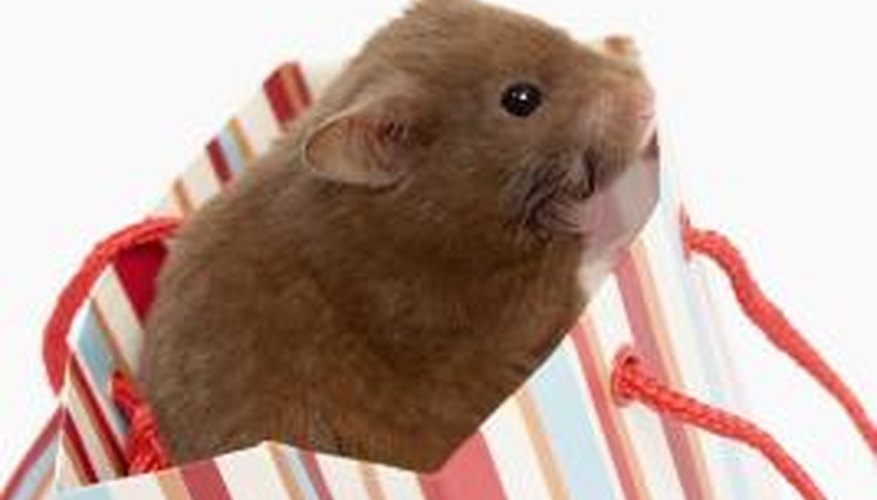Hamster teeth grow throughout their lives. If hamsters are not given hard objects to chew on, their teeth will become overgrown and eating will become impossible. Hamsters instinctively gnaw on any hard surface to keep their teeth at a correct length. Many commercial chew sticks for pet rodents are made of balsa wood. Twigs and thin branches from fruit trees also can be given to hamsters, but only under strict circumstances.
Types
Fruit tree twigs such as apple, pear or cherry make excellent chew treats for hamsters. But twigs should only be harvested from trees that have never been sprayed with pesticides. Hamsters' small sizes make them particularly vulnerable to trace amounts of pesticides, especially the smallest species of pet hamster, the Roborovski. Commercial bird perches made from fruit wood or balsa wood are safe enough for hamsters.
- Fruit tree twigs such as apple, pear or cherry make excellent chew treats for hamsters.
- Commercial bird perches made from fruit wood or balsa wood are safe enough for hamsters.
Preparation
Twigs need to be cleaned to remove any dirt that could introduce dangerous bacteria or pathogens to the hamster's cage. Sand down any splinters. Removing the bark is not necessary, as long as the twig is clean and from a tree that definitely has not been sprayed with pesticides. Any smooth chunks of fruitwood or balsa wood left over from a DIY project can also serve as chew treats, as long as glue, paint or any other toxic chemicals are not on the wood scrap.
- Twigs need to be cleaned to remove any dirt that could introduce dangerous bacteria or pathogens to the hamster's cage.
- Any smooth chunks of fruitwood or balsa wood left over from a DIY project can also serve as chew treats, as long as glue, paint or any other toxic chemicals are not on the wood scrap.
Time Frame
Wood chew sticks, bird perches or fruit wood twigs need to be removed and tossed away if they become soiled with urine or faeces. The best way to determine if a chew stick is contaminated is to sniff it. If it smells like urine, then discard it. Urine and faeces not only cause the wood to decay, but also are nothing that a hamster should eat. Urine-soaked wood or bedding can grow a potentially deadly fungus called Aspergillus.
- Wood chew sticks, bird perches or fruit wood twigs need to be removed and tossed away if they become soiled with urine or faeces.
- Urine and faeces not only cause the wood to decay, but also are nothing that a hamster should eat.
Warnings
Never give hamsters pine or cedar wood. Hamsters will gnaw on it and may become ill due to allergic reactions from the oils in these types of woods. Also, do not be alarmed if a pet hamster completely ignores a wood chew or twig. Not all hamsters are fond of chewing on wood. Give these hamsters a small piece of plain dog biscuit. This will be hard enough for them to wear down their teeth.
- Never give hamsters pine or cedar wood.
- Not all hamsters are fond of chewing on wood.
